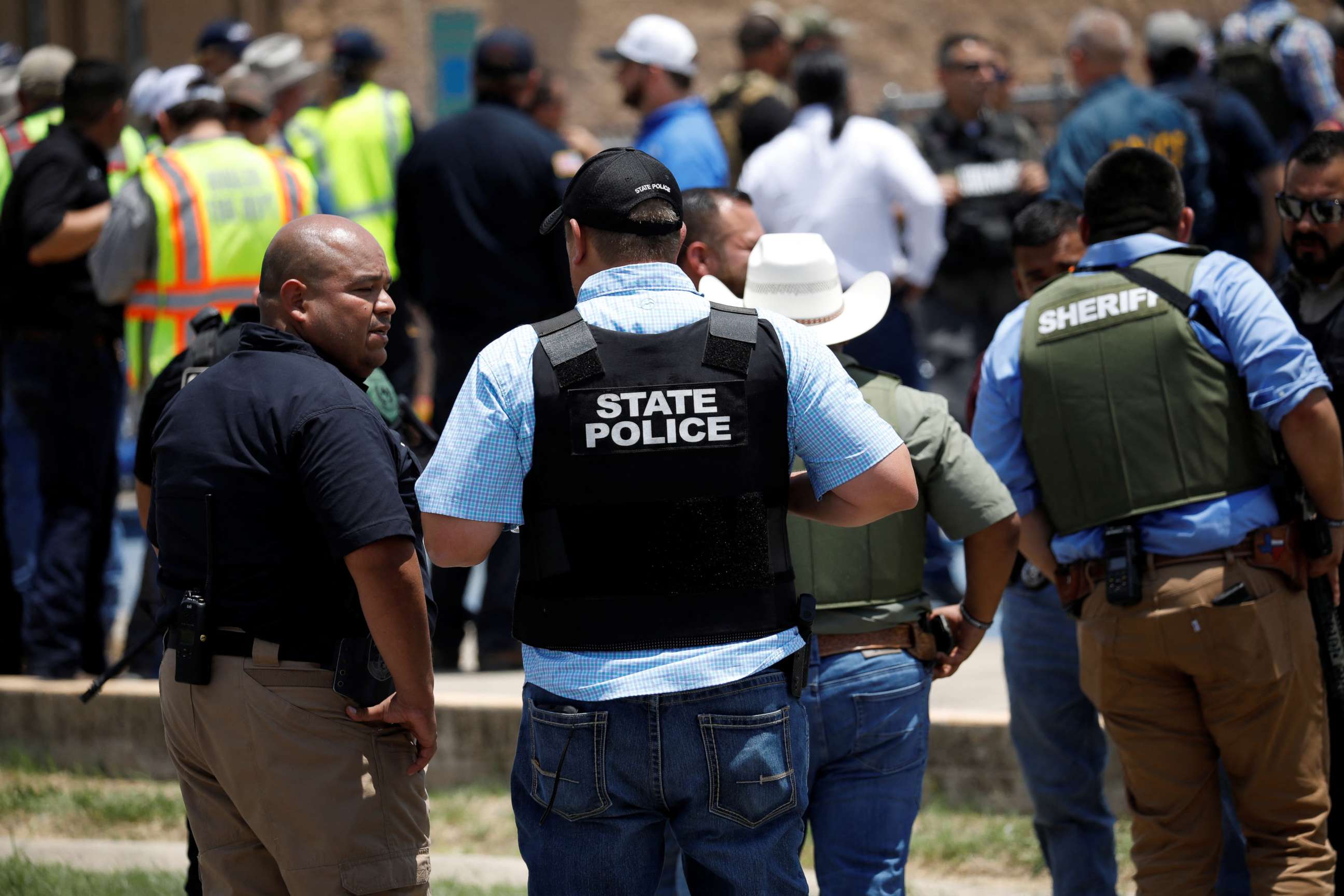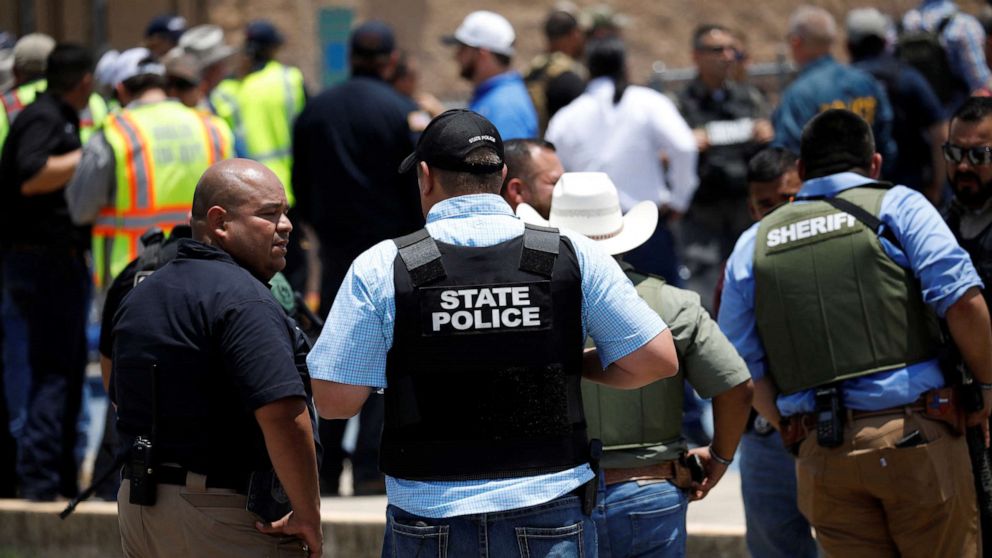Police officer missed chance to shoot Uvalde gunman by seeking permission, new assessment shows
There were several missed opportunities to stop the massacre at Robb Elementary School before it started, according to a new assessment of the law enforcement response, which provided new details and laid out a number of "key issues" with the way police handled the shooting in Uvalde, Texas, last month.
Among the report's findings: A Uvalde City Police officer armed with a rifle spotted the suspected shooter before he entered the school and had him in his gun sights, but he waited for permission from a supervisor, giving the suspect the chance to enter the school.
The "officer did not hear a response [on his radio] and turned to get confirmation from his supervisor. When he turned back to address the suspect, the suspect had already entered the west hall exterior door at 11:33:00," according to the assessment from Texas State University's Advanced Law Enforcement Rapid Response Training.
"In this instance, the [Uvalde] officer would have heard gunshots and/or reports of gunshots and observed an individual approaching the school building armed with a rifle," said the assessment. "A reasonable officer would conclude in this case, based upon the totality of the circumstances, that use of deadly force was warranted."
Had that situation, along with two others identified among the "pre incident" failures, "worked out differently," the report found, "they could have stopped the tragedy that followed."
Another problem noted by the report was the fact that the first officer to arrive on the school grounds was not able to see the suspect in the parking lot because he was driving at a "high rate of speed."
"If the officer had driven more slowly or had parked his car at the edge of the school property and approached on foot, he might have seen the suspect and been able to engage him before the suspect entered the building," the report said.

Twenty-one people, including 19 children, were killed in the May 24 attack.
The police response to the shooting has come under intense scrutiny and is now the subject of multiple investigations after it was revealed that officers did not breach the classroom containing the gunman for over an hour.
Col. Steven McCraw, the director of the state Department of Public Safety who oversees the famed Texas Rangers, told the Texas State Senate last month that the law enforcement's work that day was an "abject failure."
Ultimately, the report found that "it is possible that some of the people who died during this event could have been saved if they had received more rapid medical care."
The report was released on Wednesday by the Advanced Law Enforcement Rapid Response Training (ALERRT) Center, which is widely recognized as the leading active shooter and respond training provider in the country. The investigation was ordered by Texas's top law-enforcement agency, the Department of Public Safety, was based on public information as well as evidence -- including body camera footage and security camera footage -- that was provided by investigative agencies and has so far been kept under wraps.
Outside of McCraw's testimony, information regarding the investigation has remained behind closed doors.
The new report released Wednesday reveals new details about the timeline of events and the police response, as well as the scene that unfolded inside the classrooms once the shooter entered.
Thirty-two seconds after he entered the school, the suspect entered classroom 111, according to the assessment. "Immediately, children's screams could be heard along with numerous gunshots in the classrooms. The rate of fire was initially very rapid then slowed, lasting only a few seconds," the assessment said.
Five seconds later, the suspect exited the classroom, stepped into the hallway and then reentered room 111.
"The suspect then re-enters what appears to be classroom 111 and continues to fire what is estimated to be over 100 rounds by 11:36:04 (according to audio analysis). During the shooting the sounds of children screaming, and crying, could be heard," the assessment said.
In total, the report listed three key issues that occurred before the shooter had entered the building, three key issues that occurred during the initial police response, and a number of other problems that occurred throughout the incident.
Just minutes after the gunman entered the classroom, three Uvalde Police Department officers entered the building equipped with body armor, two rifles, and three pistols, the report found, and seconds later, four more officers entered another hallway. The officers approached the door but were repelled by gunfire and fell back for cover, which the report said is a decision that directly contradicts widely-accepted active shooter training that mandates law enforcement immediately engage the threat, even if it means police have to take fire without protective gear.
"Maintaining position or even pushing forward to a better spot to deliver accurate return fire would have undoubtedly been dangerous, and there would have been a high probability that some of the officers would have been shot or even killed," the report said. "However, the officers also would likely have been able to stop the attacker and then focus on getting immediate medical care to the wounded."
"We commend the officers for quickly entering the building and moving toward the sounds of gunfire," said the report. "However, when the officers were fired at, momentum was lost. The officers fell back, and it took more than an hour to regain momentum and gain access to critically injured people.
The report also noted multiple instances of gunfire while officers were in the hallway of the school. Uvalde School District Police Chief Pete Arredondo has said he believed the incident had transitioned from an active shooter situation to a standoff with a barricaded subject, but the report found that the "during each of these instances [of gunfire], the situation had gone active, and the immediate action plan should have been triggered because it was reasonable to believe that people were being killed."
Arredondo, who has born the brunt of public criticism after he was identified by DPS as the "incident commander," resigned from his position on the Uvalde City Council in a letter last week.
The failure to enter the classroom, or "loss of momentum," was among the three key problems identified by the report that occurred inside the building. Another was that the door to the classroom had never been locked, which allowed the gunman to enter the classroom freely.
Even though the door was unlocked, the report found that the seven arriving officers "never touched any part of the doors" in the initial convergence on the classroom. Since the very first days after the attack, law enforcement officials have said their response was stymied by a locked door. In a print interview, Arredondo said he waited in the hallway as a janitor brought dozens of keys, which he tried on an adjacent classroom door in search of a master key -- but none worked. Eventually a working one arrived.
The report also found that throughout the incident, officers had a number of tools, including breaching tools, shields, tactical operators, and CS gas, that should have "increased the capabilities of the officers."
The report also found multiple issues with the coordination of the response, including posting teams of officers at both ends of the hallways.
"Having multiple teams or splitting an existing team can create a crossfire situation," the report said. "The teams should have quickly communicated, and officers at one end of the hallway should have backed out and redeployed to another position."
Additionally, the report noted that response teams should consist of up to four individuals, and any more can "create congestion and interfere with the ability of the team to operate quickly and effectively."
Nineteen officers were in the hallway as the massacre unfolded inside the classroom.




